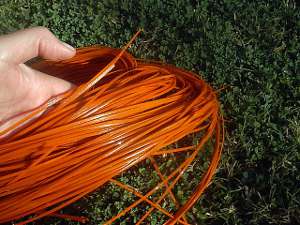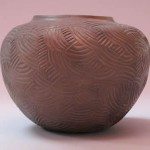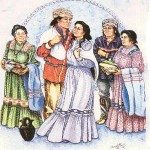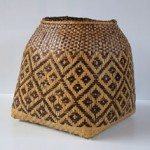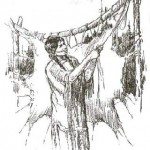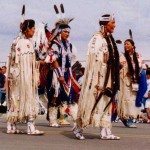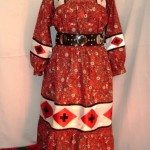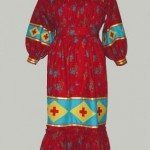Cherokee Culture Notes Edited and Revised: August 27, 2000
Fact Sheet Author Unknown
Edited by: Wendell Cochran, Tahlequah, OK
Pigments and Dyes
Pigments and dyes produced by Native Americans using organic materials are not nearly as brilliant as those we have become accustomed to since the discovery of coal tar dyes by Europeans in the 1800’s. Modern chemistry has given us even more saturated colors through the development of colorfast aniline dyes and synthetic colors, and the technology to produce highly refine pigments. At best, ancient and historic dyes were more like murky tints than real colors. Another aspect of organic dyes is that they fade rather quickly even when some type of mordant is used in the dying process. (Above added. Editor)
Red
Dark red used to color masks: Powdered red clay mixed with pokeberry juice. Speck and Broom. The red clay was probably red ochre containing a large amount of iron oxide.
Yellowish red: Blood Root.
Bright red: Wild Celadine Poppy roots boilded in bear oil. Swanton.
Inner bark of Red Oak. Swanton.
Inner bark of Red Maple. Swanton.
Inner bark of Poison Ivy. Swanton.
Red dye for feathers. (A two-step process. Ed.) Payne Manuscripts.
Step 1. Pound Yellow Root and Black Oak bark with lye made from hickory wood ashes; add mixture to a container of water and set on a fire to heat. Immerse feathers and simmer all day and then dry overnight. The feathers will be yellow after this.
Step 2. Add powdered Blood Root to first dye solution. Put feathers in and bring to a boil; then add the same amount of Blood Root and allow to simmer all day. Feathers will turn bright red.
Sweet Gum root chewed with sweet gum. Payne Manuscripts.
Yellow.
Yellow Root only in water.
Yellow Root and Black Oak bark in water.
Sassafras root. Swanton.
Butterfly Plant root. (reddish-yellow flowering milkweed) boiled in water to make a dye for painting masks. Speck and Broom.
Brown Reddish Brown: Wild Poppy roots. Swanton.
Medium Brown: Alder bark or roots for making a dye for masks. Speck and Broom.
Dark Brown: Black Walnut or Butternut bark or roots for staining masks. Speck and Broom.
Black Black Sumac or Black Walnut bark. Swanton.
Black Walnut, Butternut and Sourwood (bark?). Payne Manuscripts.
Powdered Charcoal of Chestnut or Tulip Poplar in water to color masks. Speck and Broom.
Black Walnut root and Sumac (Rhus typhina) berries; boil for one hour to color masks. Speck and Broom.
**Editor Note: There have been a lot of disagreements and theorizing about Cherokee “Traditional Colors”, what they looked like, how they were made and how they were obtained. Mooney (Sacred Formulas of the Cherokees. P. 342) lists the symbolic colors systems:
East = Red = success; triumph.
North = Blue = defeat; trouble
West = Black = death.
South = White = peace; happiness.
Above? = Brown = unascertained, but propitious.
_______ = Yellow = about the same as blue.
This list demonstrates the confusion in understanding, and in turn explaining, ancient colors. Different kinds of media produce different shades and hues of colors. Pigmented colors are derived from different sources than colored dyes. In nature we observe colors through the reflection of light rays, but re-producing those colors require at least some knowledge of chemistry processes in order to gather raw materials and refine them into usable forms. Modern-day artists – painters, fabric weavers and dyers, light show producers, etc. – understand the difficulties of obtaining their color palates. With the exception of brown, none of the colors above are found in nature in a pure form with out extensive processing. Blue pigments and dyes, for instance, are nearly impossible to produce without the use of complicated chemical processing.

